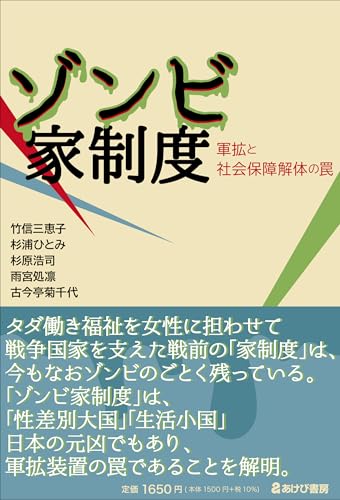4. Abe’s 3 Worst Cronyism Scandals
-----
One: Moritomo scandal
Two: Kake Scandal
Three: Sakura-Viewing Party Scandal
-----
1. "5 REASONS WHY A STATE FUNERAL FOR ABE IS A BAD IDEA"
2. "5 FATAL FLAWS OF ABE'S REMILITARIZATION DRIVE"
3. "5 DEADLY SINS OF ABE'S HISTORICAL REVISIONISM"
**********Video script**********
Hi everyone. Today I am going to talk about former prime minister Shinzo Abe’s cronyism scandals and the horrible impact they had on Japanese politics.
There are three major scandals that everyone in Japan knows about, sometimes referred to as Mori, Kake, Sakura. These scandals are generally referred to as “cronyism scandals” in English, and in Japanese, often as problems stemming from 権力の私物化 the “personalization of power.” This is because the root cause of these scandals is invariably Abe’s personalization of power that led to its abuse to his and his cronies’ advantage. Moreover, these scandals unfolded in rather similar patterns. Each of these scandals is never a single scandal, but a constellation of scandals. To be more precise, each scandal goes through a process of snowballing and gets bigger once they are exposed.
In other words, they develop in two stages. Stage one, the original wrongdoing is committed by Abe and his cronies. They are, in themselves, serious scandals that involve the breach of the principles of equality before the law and procedural fairness by the prime minister and his entourage to achieve illicit private gains. These original scandals already show from the start that Abe came to amass so much power during his reign. These are Abe’s personal scandals to start with.
Stage two, then, there is a massive, and much more systematic, attempt at covering up the unlawful acts committed by Abe and his cronies by an even greater number of his cronies in the government, which leads to the further breaking of the basic rules and institutions that underpin liberal democratic governance. At this stage, we get to see another way in which power has come to be so personalized by Abe because what started as his personal scandal becomes the subject of a systematic cover-up and thus a broader issue that concerns the entire government, and perhaps even the regime.
In sum, these scandals were not only about favoritism, but also about the destruction of the rule of law, the system of check and balance, and democratic accountability. They also exposed the democratic backsliding that took place in the hands of a strongman, on top of the rampant, if rather more mundane, corruption of power.
OK, so what are these three major scandals? Mori, Kake, Sakura stand for Moritomo scandal, Kake scandal, and the Cherry blossom viewing party scandal respectively. Let’s take a look one by one.
One: Moritomo scandal
Moritomo is the name of a school corporation in Osaka that run a wacky nationalist kindergarten. The scandal broke out in January 2017, about four years into Abe government, when the Asahi newspaper reported that the Ministry of Finance sold state-owned land to Moritomo at a tenth of the price of neighboring land in an opaque and irregular deal. The article also noted that Abe’s wife, Akie, was the honorary principal of the new primary school, advertised as “the first and only Shintoist primary school in Japan” to be built there. When the opposition politicians grilled Abe on this issue in parliament, he categorically denied any involvement and pledged to resign, not only as prime minister but also as a parliamentarian, if evidence was found proving his or his wife’s involvement.
Yes, you guessed it. This was the trigger for the snowballing of the initial wrongdoing as a cover-up order was issued to protect the Abes and went down the hierarchy of the Finance Ministry. Taro Aso, the finance minister and deputy prime minister, together with Nobuhisa Sagawa, the top bureaucrat in charge of the management of state-owned property, repeatedly gave false answers during parliamentary questioning by the opposition: on 11 occasions in the case of Aso and no fewer than 43 times in the case of Sagawa. Of course, there is no knowing the entire scope of the cover-up operation, but the Finance Ministry itself had to acknowledge in the end that more than 300 passages in 14 official documents were doctored to eliminate any inconsistencies with what Abe, Aso, Sagawa, and other government officials said in parliament when interrogated by the opposition. So, Abe’s initial lie about the fraudulent land deal, led to more lies by him and his team in parliament, and even more lies in the form of tampering public documents by lower-ranked officials. Tragically, Mr. Toshio Akagi, the very official at the bottom of the hierarchy who was made to doctor the public document by his bosses to protect Abe committed suicide leaving notes behind in a desperate attempt to record what had really happened.
The rot was not limited to the Finance Ministry, however. Leaked government documents also indicate that the supposedly independent Board of Audit colluded with government ministries to shield Abe. Furthermore, even though suspicions lingered that the finance ministry may still be hiding incriminating records, the prosecutor’s office decided not to indict any of the 38 people it was investigating for breaching taxpayers’ trust. In the end, Abe and his wife got away with it. Aso continued to serve as finance minister and deputy prime minister, and now at age 82, he is still the vice-president of the ruling LDP and the mainstay of Kishida government now that Abe is gone. Even Sagawa was rewarded with a promotion to the post of director-general of the National Tax Agency for his loyal service. So, none of them was held accountable.
Two: Kake Scandal
Soon after the Moritomo scandal broke out, another one, also involving a school corporation, followed. In this case, it was about Kake school corporation in the island of Shikoku run by a college buddy of Abe’s, over a special bid to get state permission to open a lucrative vet school. As it so happened, Kake school beat a stronger bid by a rival school in Kyoto, and in the process, rules and standards were apparently bent to produce the desired result. When the opposition questioned Abe’s involvement, he flat out denied it, but a couple of months later, Asahi reported that it obtained official documents within the Ministry of Education that recorded that “this (meaning expediting the opening of the vet school by Kake) is the intention of the prime minister.”
Then the cover-up began. The education minister, Hirokazu Matsuno responded that the said incriminating documents could not be found in the ministry and ruled out further investigation on the matter. But, in an extraordinary turn of events, Mr. Kihei Maekawa, the former top official at the ministry, came out to confirm the existence of such documents and gave further details about top-level pressure and interference from politicians and officials from the prime minister’s office. More leaks followed from the education ministry, and it became certain that Abe had his minions apply pressure and bend the rules for his crony’s school bid.
The government counterattack against the whistleblowers was disingenuous and nasty. The police had the conservative Yomiuri publish a sex scandal of Mr. Maekawa’s to discredit him on the eve of his press conference, only to have it proven false a couple of weeks later. A junior minister at the education ministry threatened the bureaucratic whistleblowers with consequences if they were found and caught. The politicians and bureaucrats who served as intermediaries between Abe and the various actors involved kept on telling lies in parliament and to the press even after much of the truth was known.
Once again, Abe got away with it. Matsuno, the education minister, is today Kishida’s chief cabinet secretary. Koichi Hagiuda, who was Abe’s closest aid and messenger boy, was recently promoted to be the policy chief of the LDP by Kishida in spite of his known intimate ties with the Unification Church. Abe’s bureaucratic aids, who, unlike Mr. Maekawa, kept their mouths shut and collaborated with the cover-up were also rewarded with cushy second jobs upon retirement.
Three: Sakura-Viewing Party Scandal
The annual Cherry Blossom Viewing Party was an official government event hosted by the prime minister with foreign guests and citizens of special merit since the early postwar, but in 2019 the opposition noticed that there was something fishy going on. Its cost was far exceeding the budget every year since Abe became prime minister, and kept on rising, apparently as more and more guests got invited. As it transpired, Abe was using taxpayers’ money to invite an ever-greater number of his and his party’s loyal supporters as “persons of merit” for the state.
The cover-up of the guest lists began immediately after the irregularities caught attention. On the very day an opposition parliamentarian submitted a request for information disclosure about the party, officials at the Cabinet Office shredded the guest lists to destroy evidence. When that was revealed, Yoshihide Suga, the chief cabinet secretary at the time, claimed that there was an earlier, pre-scheduled plan to shred the lists but that the actual shredding coincided with the day the request for disclosure was made because there was a long line for the use of the shredders and the shredding schedule was delayed. Abe further added that the shredding work was done by disabled staff, as if to insinuate that the delay was caused by their disability, and somehow coincided with the day the disclosure request was made as a result. Can you imagine? In fact, the shredding of the guest lists was in breach of the law concerning the preservation of government record, and furthermore, it was later revealed that some of the lists existed but were hidden and some others were disclosed but tampered with. So, the frantic cover-up operation had the bureaucrats commit illegal acts of destroying, hiding, and tampering with public documents to avoid parliamentary scrutiny.
Once some of the lists were obtained or released, it became apparent that the prime minister, his wife, and LDP politicians, particularly those who were close to Abe and those who were up for reelection soon, were given quotas that they can fill with their guests, regardless of whether they had any notable merit. In fact, Abe’s secretaries were caught giving open invitations to his constituents to the party where they can mingle and perhaps even take selfies with Abe and other celebrities. Criminal figures and rightwing thugs were also found to be among the guests. In other words, the guests were not necessarily “persons of merit” at all, and they were not even vetted by the government, even though it was a state event paid for by the taxpayers. It looked more like a lavish private party that Abe threw for his sycophantic supporters.
This, of course, was a breach of the campaign finance law and the election law, but the scandal snowballed further, when it was discovered that Abe’s personal support group hosted a pre-party dinner party on the eve of the Sakura viewing party every year at a posh hotel in central Tokyo, and Abe’s political funds covered at least part of the costs of his supporters wining and dining there, which was an even clearer violation of the campaign finance law and the election law. Abe lied in parliament at least 118 times until he finally admitted that his secretary did it, according to the research bureau of the Lower House. The secretary was fined, but the prosecutors did not press charges against Abe. Thus, Abe got away with this one too.
Do you see the pattern? The initial cases of abuse of power were bad enough in themselves, but it got even worse each time once Abe’s involvement started to be suspected because Abe then further abused power to cover up the original cronyism scandal of his making. It’s like he commits a theft and then corrupts the entire justice system not to get caught. I guess this is what happens when it’s rotten at the very top of the hierarchy.
So, can Kishida turn a new page? Not if he puts the issue of the close ties between the LDP and the Unification Church under the carpet and uses the state funeral to whitewash Abe’s legacy, as he is trying to. The Unification Church ties concern first and foremost the Abe faction precisely because Abe was the linchpin of the LDP’s tight relations with the predatory cult. Since Abe’s grandpa Kishi initiated the ties, it was a family business that he and his entourage benefited from until he got killed by one of the Church’s victims. Ironically, the Unification Church scandal is Abe’s last cronyism scandal, and if Kishida is desperately trying to cover that up with a state funeral as if Abe was still his boss, Abe will remain the rotten head of the LDP even after his death. Isn’t it time to bury Abe’s nefarious legacy? As Kishida doesn’t, the people should.
Thanks for watching. I might come back again with occasional English videos on Japanese politics, but until then I will go back to the usual Japanese format. Goodbye.
******************************
September 23, 2022
Koichi NAKANO, "Progressive! Channel" (https://www.youtube.com/c/ProgressiveChannelKN/featured)
Reproduced by courtesy of Koichi Nakano Ph.D.
2022.09.24 Sat
カテゴリー:ニュース
タグ:女性政策
 慰安婦
慰安婦 貧困・福祉
貧困・福祉 DV・性暴力・ハラスメント
DV・性暴力・ハラスメント 非婚・結婚・離婚
非婚・結婚・離婚 セクシュアリティ
セクシュアリティ くらし・生活
くらし・生活 身体・健康
身体・健康 リプロ・ヘルス
リプロ・ヘルス 脱原発
脱原発 女性政策
女性政策 憲法・平和
憲法・平和 高齢社会
高齢社会 子育て・教育
子育て・教育 性表現
性表現 LGBT
LGBT 最終講義
最終講義 博士論文
博士論文 研究助成・公募
研究助成・公募 アート情報
アート情報 女性運動・グループ
女性運動・グループ フェミニストカウンセリング
フェミニストカウンセリング 弁護士
弁護士 女性センター
女性センター セレクトニュース
セレクトニュース マスコミが騒がないニュース
マスコミが騒がないニュース 女の本屋
女の本屋 ブックトーク
ブックトーク シネマラウンジ
シネマラウンジ ミニコミ図書館
ミニコミ図書館 エッセイ
エッセイ WAN基金
WAN基金 お助け情報
お助け情報 WANマーケット
WANマーケット 女と政治をつなぐ
女と政治をつなぐ Worldwide WAN
Worldwide WAN わいわいWAN
わいわいWAN 女性学講座
女性学講座 上野研究室
上野研究室 原発ゼロの道
原発ゼロの道 動画
動画


![[広告]広告募集中](https://wan.or.jp/assets/front/img/side_ads-call.png)












